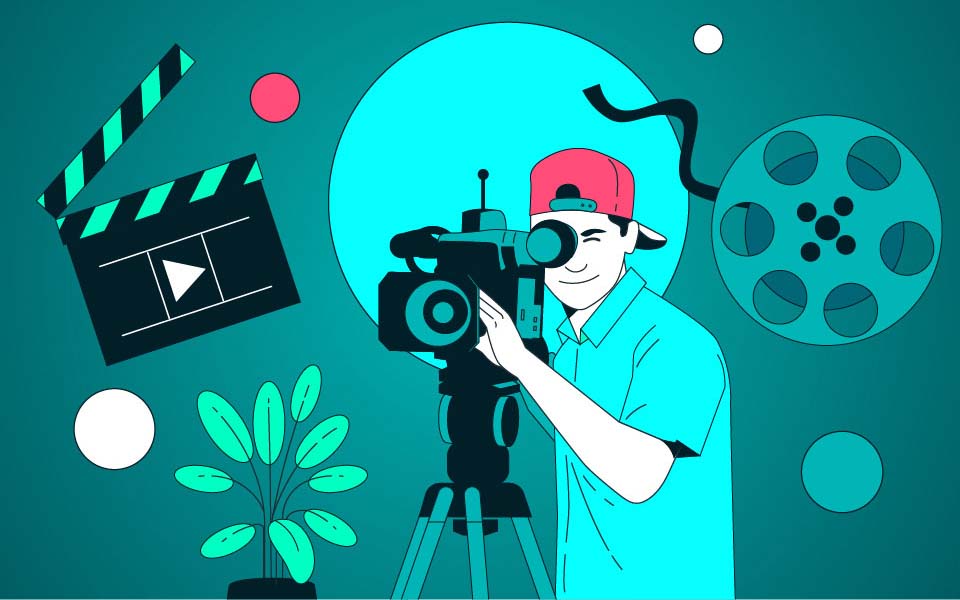In today’s digital age, videography has become an integral part of various industries and creative ventures. From corporate presentations to cinematic masterpieces, and documentaries to personal vlogs, videography encompasses a wide array of styles and techniques. In this comprehensive guide, we will delve into the art of videography, exploring different types, techniques, equipment, and technology involved.
Introduction
Videography is an art form that goes far beyond merely pressing the record button. It is an artistic process of capturing moving images on electronic media. What sets videography apart from simple video recording is the sophistication involved in capturing visuals and sounds to create a consistent and engaging story or message. It combines elements of storytelling, visual composition, and technical expertise to convey messages, evoke emotions, and engage audiences. Whether it’s for business, entertainment, or personal expression, videography offers endless possibilities for creativity and communication.
Types of Videography
1. Corporate Videography
Corporate videography involves creating videos for businesses and organizations. It encompasses a wide range of content, including promotional videos, training videos, product demonstrations, and testimonials. The key focus of corporate videography is to effectively communicate the brand message, showcase products or services, and engage with the target audience professionally.
2. Cinematic Videography
Cinematic videography aims to evoke emotions and create immersive experiences through visual storytelling. It often employs cinematic techniques such as dynamic camera movements, creative framing, and expressive lighting to enhance the narrative and captivate the audience. Cinematic videography is commonly used in filmmaking, music videos, short films, advertisements and commercials.
3. Documentary Videography
Documentary videography involves capturing real-life events, stories, and experiences with authenticity and integrity. Filming a documentary video involves doing factual research, conducting interviews, and weaving together an accurate and truthful narrative. It requires a keen eye for detail, empathy, and a commitment to portraying reality accurately. Documentary filmmakers strive to present unbiased perspectives, conduct in-depth research, and capture compelling visuals to educate, inspire, and provoke thought among viewers.
Videography Techniques
1. Composition and Framing
Composition and framing are the fundamental aspects of videography as it determines the visual appeal and effectiveness of the video. Composition is how the constituents of an image interact, and framing is how you put together an image to draw the focus to a subject, by isolating them from the rest of the image, often using natural elements already existing in the image. Techniques such as the rule of thirds, leading lines, and framing help create balanced, visually engaging shots. Experimenting with different angles, perspectives, and camera movements can add depth and dimension to your videos.
2. Lighting in Videography
Lighting is another essential aspect of videography that significantly influences the mood, atmosphere, and overall quality of the video. Understanding the principles of lighting, such as key light, fill light, and backlight, can help you create compelling visual compositions. Experimenting with natural light, artificial light sources, and light modifiers allows you to sculpt the scene and enhance the storytelling aspect of your videos.
Equipment and Technology
1. Camera Selection
Choosing the right camera for your videography projects depends on factors such as budget, desired features, and intended use. DSLR cameras and professional camcorders offer different levels of performance and versatility. Consider factors such as resolution, frame rate, sensors, and lens compatibility when selecting a camera for your videography needs.
2. Editing Software and Post-Production
Post-production is where all of the raw footage comes together and is transformed into a polished video that aligns with the storyline. Editing software (such as Adobe Premiere Pro) provides powerful tools for video editing, color grading, audio mixing, and visual effects. Editing allows you to refine the narrative, enhance visual appeal, and deliver a smooth viewing experience.
Conclusion
Videography is a versatile medium that allows storytellers and filmmakers to express their creativity and connect with audiences on a deeper level. Whether you’re documenting real-life events, or producing corporate content, the art of videography offers endless opportunities for exploration, innovation, and self-expression.
At Creative Code Productions, we are passionate about bringing your vision to life through the power of videography. If you’re looking to produce captivating corporate videos, immersive cinematic experiences, or compelling documentaries, our team of experienced professionals will gladly assist you. Backed by our expertise in composition, lighting, and post-production, we invite you to partner with us to ensure that your message resonates with your audience effectively. Together, we can create unforgettable visual experiences that inspire, inform, and engage.





